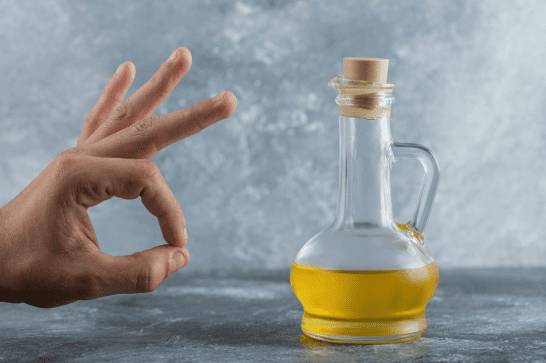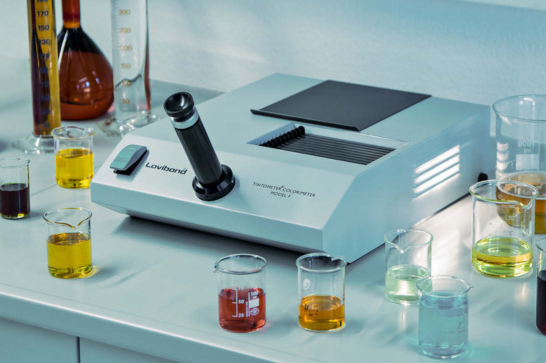Standardise Your Oil Testing. Be the Name Everyone Trusts in Edible Oils!

Understanding the standards for measuring the colour of edible oils is essential for ensuring consistency and quality across the industry. Various international and national standards outline the correct procedures for colour measurement, whether conducted visually or digitally. These standards provide a reliable, reproducible, and comparable framework that helps manufacturers maintain product quality and meet regulatory or market requirements.
Why Standards Matter?
In a global marketplace, where oils are traded across borders and processed in different geographies, standardised methods eliminate subjectivity. They help labs, producers, and exporters speak the same language when it comes to colour, no matter the region.
Key Standards for Colour Measurement in Edible Oils
AOCS:
The AOCS has long been the global standard for analytical methods in the edible oils industry. They define methods and scales for quantifying oil colour. These standards help ensure product consistency and quality control by providing a standardized way to measure and assess colour, which is crucial in the refining process and for consumer perception
- AOCS Cc 13e-92:
Official Method for using the visual calibrated colour glasses in accordance with the Lovibond® Tintometer® Colour Scale.
This method outlines procedures for using Lovibond® visual instruments to determine the RYBN colour units (Provided no turbidity is present) in oils.
- AOCS Cc 13j-97:
This outlines using the automated method giving results in the Lovibond® Colour Scale or the AOCS Tintometer® Colour Scale.
This is a digital standard determine the RYBN colour units of refined oils (Provided no turbidity is present) using the Lovibond® automated instruments
ISO:
The ISO also has long been the global standard for analytical methods in the edible oils industry. ISO standards for edible oil colour measurement provide a framework for consistent, reliable, and objective colour assessment, which is vital for both the manufacturing and consumer sides of the edible oil industry
- ISO 15305:1998 –
This International Standard specifies a method for the determination of the Lovibond® colour of animal and vegetable
fats and oils, using the visual Lovibond® instruments. This standard mirrors the AOCS visual method, providing an internationally harmonised approach using the Lovibond® instruments. - ISO 27608:2010 –
Animal and Vegetable Fats and Oils – Determination of Colour in Automatic Instruments.
This defines instrumental colour measurement procedures, eliminating human bias and supporting automation in lab environments.
Both standard methods are used extensively to measure the colour of edible oils across the globe. The AOCS Cc 13e-92 is a visual standard, where human factors can influence the measurements, whereas the digital standard AOCS Cc 13j-97 is devoid of human factor influence on the measurements.
In general, a dirty visual instrument is likely to give results that are artificially light, while dirt in automatic instruments significantly reduces the repeatability and accuracy of measurements
BIS:
The BIS-548 Part 1 has long been the Indian standard for analytical methods in the edible oils industry. It outlines specific method for measuring the colour of edible oils to ensure quality and consistency using the visual Tintometer®
- IS 548 (Part 1): 1964 : (updated in 2021)
Methods of Test for Oils and Fats – Colour Measurement (Lovibond® Visual Method)
This standard provides procedures for visual colour comparison using Lovibond® glasses in the Indian context. It is especially important for regulatory testing and domestic trade within India.
In India, the Bureau of Indian Standards (BIS) has adopted specific guidelines for colour measurement, particularly for edible oils. The BIS standard for oils recommends expressing colour as Y + 5R (Yellow units + 5x Red units), reflecting the unique colorimetric properties essential for maintaining product quality in the Indian market
Visual vs. Automatic Standards – What's the Difference?


How to Select the Right Standard?
When choosing a standard for your operation, consider the following:
- Regulatory Requirements (e.g., BIS for India, AOCS & ISO for exports)
- Volume of Sample Testing
- Desired Accuracy & Repeatability
- Customer/Buyer Specifications
Adhering to the right colour measurement standard isn’t just about compliance—it’s about building consistency, trust, and market readiness. Whether you're refining oils for domestic consumption or exporting to international markets, standards like AOCS, ISO, and BIS provide the structure for reliable colour evaluation
As testing technologies evolve, many manufacturers are moving from visual to automatic instruments, aligned with standards like ISO 27608 and AOCS Cc 13j-97, for faster and more objective results
How Lovibond® Instruments align with these standards?
Lovibond® colour measurement instruments adhere to international & national standards, making them a perfect choice for researchers and industry professionals. Standards such as ISO 15305 and AOCS Tintometer® method (Cc 13e) emphasize measuring colour as the sum of RYBN units (Red, Yellow, Blue, and Neutral). This comprehensive approach ensures a more precise characterization of oils and fats, critical for quality assurance and regulatory compliance.
Using a visual instrument? Discover the advantages of going automatic!

Need help in choosing the suitable instruments for your edible oils colour testing?
 Service Request
Service Request  Sales Enquiry
Sales Enquiry  Customer Reviews
Customer Reviews